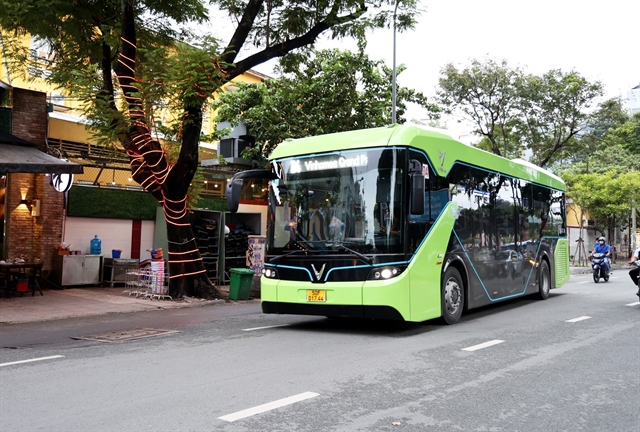 Environment
Environment

 |
| A wind farm in Thuận Bắc District, Ninh Thuận Province. VNA/VNS Photo Trần Việt |
HÀ NỘI — Experts from the German Agency for International Cooperation (GIZ) have recommended that creating renewable energy generation hubs can address existing or potential supply shortages and grid bottlenecks in Việt Nam.
The suggestion came in a recent report on 'Conceptualising renewable energy hubs for Việt Nam: International Case Studies Focusing on Offshore Wind'.
According to the Ministry of Industry and Trade, each renewable energy hub includes manufacturing plants for wind and solar power equipment, logistics services, specialised seaports to support construction, operation and maintenance of renewable energy projects.
Based on consultations with Vietnam Electricity Authority under the Ministry of Industry and Trade, Petrovietnam (PVN) and Vietnam Electricity (EVN), the GIZ’s study places particular emphasis on localising the offshore wind value chain as a foundation for systematically developing renewable energy hubs.
It is intended to inform next steps in planning and implementing renewable energy hubs, including identifying suitable locations for local value chain expansion, selecting integrated renewable energy hub components and shaping policy frameworks to promote their deployment in Việt Nam.
It also aligns with Việt Nam’s intention to establish two interregional renewable energy hubs as outlines in the revised Power Development Plan VIII.
Dr David Jacobs, a member of the international consultation experts from GIZ, said renewable energy manufacturing hubs need to be aligned with existing supply chains and logistical parameters.
They are ideally located in specific transmission zones like in the Việt Nam’s northern areas and can help tackle supply shortages, he said.
The hubs also look towards generating electricity for green manufacturing.
Dr Ralf Leutz, another international consultant from GIZ said based on case studies from the EU, many renewable energy manufacturing hubs have mechanisms in place to ensure that electricity required for production comes from renewables.
Philipp Munzinger, programme director of the GIZ Energy Support Programme, said the intention to establish renewable energy hubs is good, suggesting the need to leverage advantages, such as Government support, existing knowledge, resources and available potential, for example, the existing port infrastructure.
"From there, we can utilise these to develop the offshore wind power value chain," he said.
Tăng Thế Hùng, deputy director of the Vietnam Electricity Authority, added: “The report on conceptualising renewable energy hubs for Việt Nam is an initial step and a preliminary study to help Việt Nam understand the direction we should take, where we aim to go and to plan the roadmap accordingly.”
"Once the report is completed, we will need to report it to the Government. We also need supportive policies to develop renewable energy hubs.
"We welcome all feedback to help improve the report. The Vietnam Electricity Authority will coordinate with GIZ to broaden the consultation process and gather input from relevant stakeholders."
The MoIT has recently proposed the development of two interregional renewable energy industry and service hubs - one in the northern region and another in the southern region.
These hubs aim to form a complete value chain for the renewable energy sector.
These hubs will also integrate green industrial zones with low carbon emissions and house research institutions and specialised training centres for clean energy workforce development.
In the north, the hub is expected to be located in Hải Phòng City, Quảng Ninh and Thái Bình provinces, with potential for future expansion to neighbouring areas.
The southern hub is expected to be based in Ninh Thuận, Bình Thuận, Bà Rịa - Vũng Tàu provinces and HCM City.
The southern region is well known for significant potential for wind and solar power as well as existing seaport infrastructure.
According to the revised Power Development Plan VIII, by 2030 Việt Nam’s total solar power capacity is projected to reach between 46,459 and 73,416 MW, and onshore wind power between 26,066 and 38,029 MW.
Offshore wind power, aimed at meeting domestic demand, is targeted at 6,000 MW by 2030, and 17,032 MW by 2035.
In the future, renewable energy will not only serve domestic consumption but will also be used in the production of new energy forms for export. VNS




